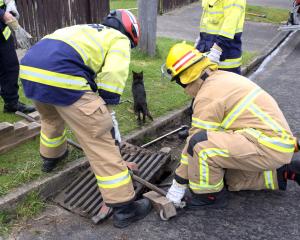
Figures released under the Official Information Act show in 2009, 3225 people served home detention, parole or extended supervision sentences or orders and 3844 people served a community detention sentence.
In addition, 219 parole orders and three extended supervision orders requiring electronic monitoring were imposed by the courts.
A Dunedin man serving a community detention sentence claimed recently that because of faults his electronic monitoring equipment had to be replaced twice during his six-week sentence.
The Department of Corrections said the case appeared to be unique and gave its assurance offenders were not being mistakenly charged with breaches of electronic monitoring because of equipment faults.
The man, and another serving a home detention sentence who claimed his anklet was also replaced after problems, said they were not surprised to hear the equipment had so many faults.
General manager of community probation and psychological services, Katrina Casey, said there was nothing unusual or of significant concern about either the nature or volume of the faults when compared with electronic monitoring internationally.
She noted some would have been multiple faults recorded for one unit over the period of time it took to either replace the unit or fix it.
That was supported by the fact that from a total of 204 faults on home detention units, only seven units needed replacement.
Of the 389 faults recorded in community detention units over the 25 months to April 30, only 88 units were replaced.
Common faults included loss of communication or power, flattened batteries, or malfunction after being damaged by offenders.
There were "strict policy and procedures" in place to ensure the faults were identified and resolved quickly, she said.
"The critical thing is that systems for identifying issues are robust and that the information provided by those systems is acted on within appropriate time frames. We have no evidence to suggest any issues of concern in either regard."
Security firm G4S New Zealand Ltd holds the contract for monitoring all people on electronic monitoring sentences and orders.
As at May 16, 3215 offenders were being electronically monitored from the company's monitoring centre in Auckland.
According to its website, the company provides daily reports to probation officers, who are responsible for installing the "state-of-the-art" equipment and dealing with compliance and sentence violations.
Ms Casey said the units used were not old. A unit's lifespan varied significantly, depending on how it was looked after and the type of environment to which it was exposed.
Most units were monitored via the cell phone network or, in places where there was weak or poor coverage, standard landlines or satellites.
She declined to reveal how much the contract with G4S, which started on November 1 last year and was due for review in April 2012, was worth, or how many companies bid for it or what the department's performance expectations of the company were, citing commercial sensitivity.














